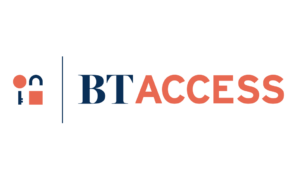THE CUSTOMER DOES NOT COME FIRST!
WRITTEN BY SHERRY DEUTSCHMANN
Can you imagine yourself as the CEO of a fast-growing company, sitting in front of a prospective customer, telling them you wanted their business, and then telling them that they would NOT be a priority to you? Well, believe it or not, that is the strategy I used to build a $40 Million company. How’d the customer respond to such a seemingly brash move?
They leaned in, hanging on my every word as I qualified my bold statement with details of how my commitment was to honor and care for my employees FIRST, and how it would ultimately affect them. Typically, the room was very quiet as I told them of our unique employee benefits. And I watched as they absorbed my words and experienced the inevitable epiphany… that our employee-first business model would enable them to get the best products and service.
I recall the first several times I took this approach and the way our sales team feared the customers’ reaction. Until the fear was replaced with awe. Until they were able, a few years down the road, to proudly tout that most of their sales were due to our culture. The results: they turned into selling machines, growing fast enough for us to be named to the Inc. 5000 list for ten consecutive years – even more impressive because we were the national price leaders.
How was it that I, a first-time entrepreneur, a single mom with only a high school education, came to adopt such a winning strategy? Easy. I’d been a ideal employee, dedicated to the company, working doggedly to make them successful, but it was obvious they didn’t care about me. In fact, when I approached my boss with ideas to improve employee morale, he patronizingly patted my hand and told me I didn’t know anything about business.
He might have been right – I didn’t know much about business. But I knew human nature. And I knew that I and my co-workers wanted to know that we mattered. We wanted to be heard and respected. We wanted to know what-the-heck was going on!
It turns out that I was not alone in my frustration. A recent Gallup poll revealed that more than 50% of employees are unhappy and “disengaged”. The scary part is that this stat includes your really good employees! Yep. As you are reading my words, some of your key employees are looking for a new job. What can you do about it?
I’ll tell you what I did about it. Three things: Listen. Be transparent. Share. Let me elaborate.
Listen to them.
How much time are you spending listening to your people? Try this: tomorrow, grab two cups of coffee from the kitchen and head over to an employee. Ask how they spent their weekend. What keeps them awake at night? What’s going on with the kids? Then, ask them what’s the ONE thing they see you doing that they wish you’d stop doing now. Hmmm. What ONE thing do they need from you to make their lives better? Ask the questions. And listen. You’re going to learn about their unique challenges -the stuff they face every day before they get to work. You’re going to learn about things going on in your business that you had no idea about. You’re going to learn how to be a better leader…if you listen.
At LetterLogic, it was common for me to be on the production floor of our factory, chatting with employees. But I also saved my Wednesday lunch hour for what we called “Lunch with Lucy”. The employees would sign up to have lunch with my alter-ego, Lucy, to just talk and get to know each other better. They chose the restaurant. They chose who else might be at the table. They chose the topic of conversation. It was the most valuable time I spent in growing a great company. Instead of spending thousands of dollars on consultants to tell me what I was doing right or wrong, I heard it directly from my team for the price of lunch.
Be transparent.
How can the employees help make your company the best it can be if they don’t clearly understand how you make money? And why you’re making key decisions. At LetterLogic, we shared the financials on a monthly basis, helping the employees see a direct connection between their work, their behavior and the financial outcome. It made the pieces of the puzzle fall in place. It changed their behavior! And, we published the minutes of our leadership meetings so they KNEW they were being heard – they saw that we discussed the very topics they’d raised with me.
Share.
What does that mean? For us, it meant a unique profit-sharing plan that gave every individual a vested interest in our success. Monthly, we distributed 10% of the net profit, split evenly, so that everyone got the same dollar amount – sending a clear signal that they were just as important as anyone else on the team, regardless of role or tenure. That changed everything – having everyone act like owners of the company, increasing our profitability in ways that nothing else could have achieved.
Yes, I’m a softy and my employee-first approach was born from my desire to treat others the way I wanted to be treated. But I instinctively knew it was a good business move. I took great care of the employees; they took extraordinary care of the customer; the shareholders had a great ROI; we ALL benefitted. There was no downside.
So, how does YOUR company invest in your greatest asset…your people? If you want to take your company to the next level in profitability, consider investing in your greatest asset: your people. No other investment will pay the dividends that you’ll enjoy if you just put your people first.




